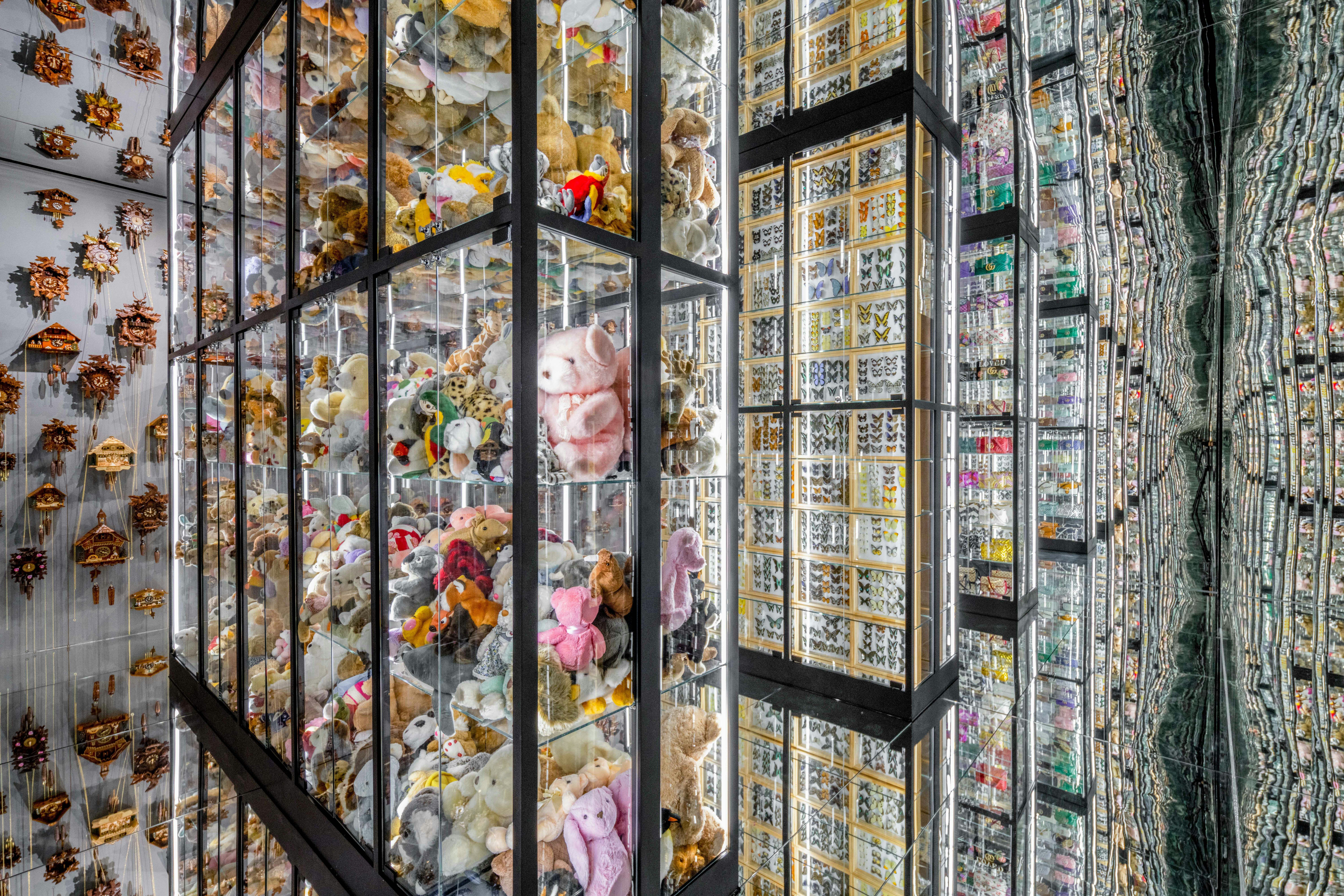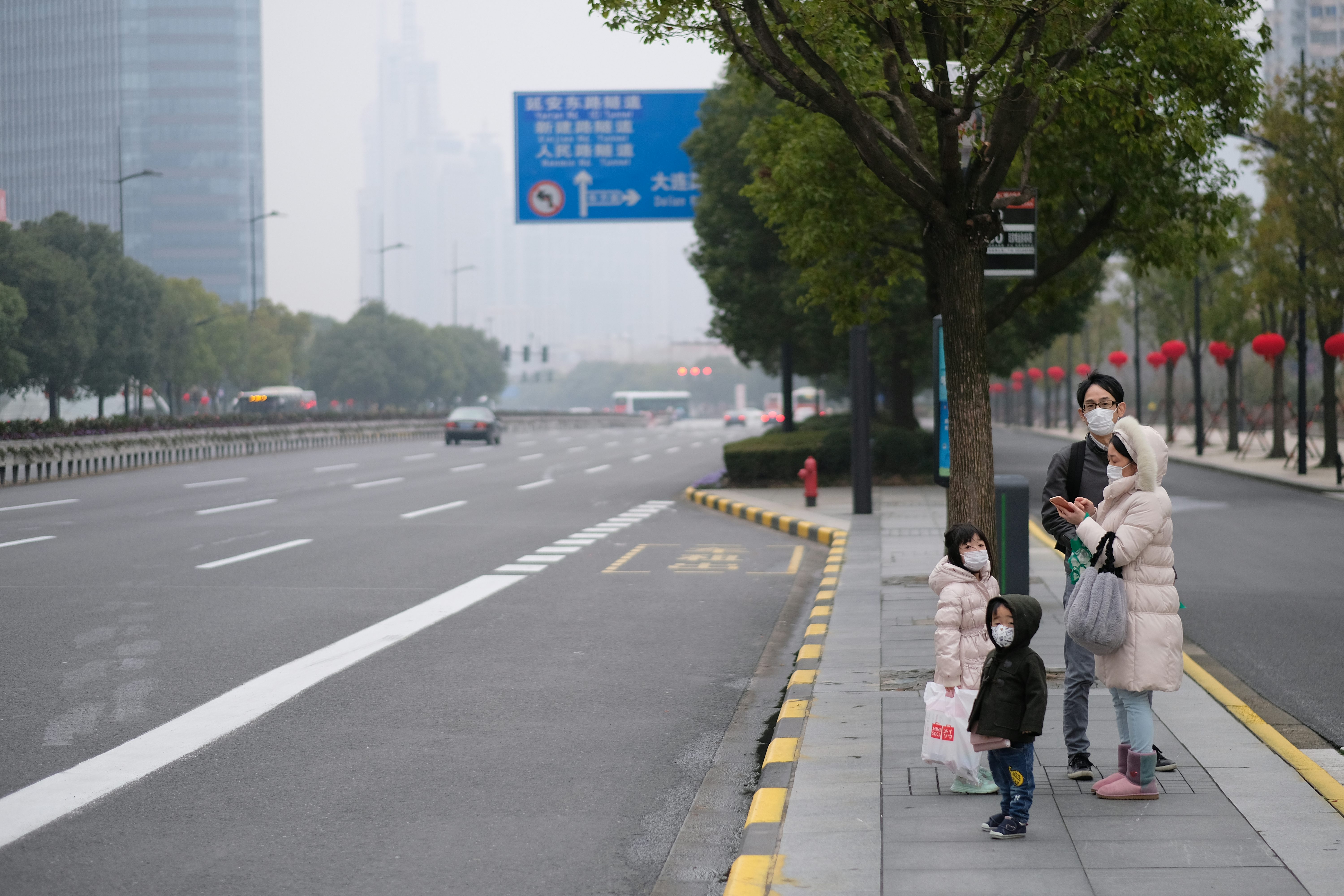Will Chinese Students Return to International Fashion School Campuses? | China Decoded, BoF Professional
Campuses of fashion schools around the world have been eerily quiet over the past year, as classes and student-teacher interactions moved online.
But in China, the opposite was true, with schools across the country operating as normal and some reporting an overwhelming increase in demand from domestic students unable — or unwilling — to wait and see when previously preferred international institutions would resume normal operations.
“We have seen our numbers increase by a lot,” said Matteo Lenzotti, fashion design co-ordinator at Istituto Marangoni Shanghai. “A lot of these students, we were afraid that when the borders reopened they would want to go somewhere else, but most of them, they want to stay here.”
Particularly appealing for these students, Lenzotti added, is how the school has been able to cater to the particular needs of local students, offering understanding in a way that would be difficult for schools abroad to replicate.
“[It’s mainly about] making them feel like their culture matters,” Lenzotti explained. “Often Chinese students, when they go abroad, if they want to do something traditional it’s not necessarily going to be well-understood.”
The global pandemic has really expedited what was going to be inevitable.
Some within the Chinese fashion education sphere believe the pandemic is simply speeding up a process that was already underway.
Local fashion schools are improving their design education offerings with innovative new programmes and international schools are partnering with local institutions or opening their own local campuses in order to offer a domestic version of their renowned international fashion programmes. As they do, the default choice to move abroad as a necessary step on the path to a successful fashion career becomes more complex.
“The automatic thought that ‘I’ve got to go international to get a good education’ is reducing. It’s still there, but it’s not getting bigger, that’s the reality,” said Simon Collins, ex-dean at Parsons School of Design and current visiting professor at Beijing’s Tsinghua University.
An Already-Existing Trend
Prior to the pandemic, the Chinese student population at top fashion schools was between 10 and 20 percent, depending on the institution.
More broadly, education non-profit NAFSA estimated that between 2017 and 2018, Chinese students contributed $13 billion to the US economy, while Chinese state media China Daily reported that they spend an average of £2 billion ($2.4 billion) in the UK every year.
This being said, declines were already being observed in Chinese international student populations before 2020, particularly in the US. The pandemic “has really expedited what was going to be inevitable,” said Carol Kim, senior vice president of enrolment management and strategic partnerships at The New School.
“My belief is that students will not always travel abroad, especially when Chinese universities are getting so much global attention, they are rising in the rankings,” she said, adding that she has spoken to a number of employers within China who specifically focus on recruiting from domestic schools, because they believe those who have studied abroad require a “transition period” in order to understand the the local market.
Shanghai is also a cool place, it’s not just London or Paris or Milan.
There’s also the rise of Chinese pride, especially among the country’s young people. This has become a force in fashion, parallel to the rise of Chinese consumer power and industry bellwethers such as Shanghai Fashion Week, where Chinese designers not only star on the catwalk but are also proving a hot property among buyers at concurrently-running showrooms.
“There’s more of an international vibe in the design scene in Shanghai and potential students also see that and it makes them feel Shanghai is also a cool place, it’s not just London or Paris or Milan,” Lenzotti said.
Growing concerns about safety for Chinese students considering studying abroad has also had an impact, he added. Since the start of the pandemic, the group Stop AAPI Hate has compiled a list of nearly 3,800 incidents of anti-Asian discrimination in the United States, several of which made headlines in China. Anti-Asian, specifically anti-Chinese sentiment in the west, is also widely discussed on social media, further complicating the decision to leave home in pursuit of an education.
Domestic Design Education Gets a Push
China has long been home to plenty of fashion and design courses, with bachelor’s programmes from institutions such as Tsinghua and the Beijing Institute of Fashion Technology in the country’s capital, Donghua and Tongji Universities in Shanghai, Chongqing’s Sichuan Fine Arts Institute, Hangzhou’s China Academy of Art and the Wuhan Textile University acting as feeders for master’s programmes at renowned international institutions such as Central Saint Martins, London College of Fashion or Parsons School of Design.
The problem has been, traditionally, that much of China fashion education has either highly academic, or highly vocational, with little focus on creativity and design. Today, there is also a widespread push to improve the overall quality of Chinese fashion education.
There is clear evidence of a significant drive to raise the standard.
“There’s clear evidence of a political driver and institutional, central support and funding for improving fashion education as we know it,” said Patrick Gottelier, master of apparel and product Design at Shanghai DeTao Masters Academy, which offers advanced undergraduate programmes for various design disciplines in conjunction with the Shanghai Institute of Visual Arts (SIVA).
Carole Kim has observed the same push from China at a government level, which, in a country like China, carries a significant weight and greatly improves the likelihood of an ambition becoming a reality.
“I do believe there is a great desire from China to build its own design schools and really wanting the students to stay,” she said, adding that the pandemic, coupled with the “not-so-wonderful relationship between the Chinese and US governments” makes that desire more urgent.
Collins, too, has seen the way Chinese institutions are raising the standard, describing a new programme at Tsinghua which will see executives from Kering help guide students through the process of building a brand.
“Creative education has to have industry relevance,” he said. “To me it’s very clear, there are certain things you go overseas for and those things can’t be replicated here. Other things you can get just as easily here. If you dream of working for Gucci and at Tsinghua they might notice you, that’s [an advantage] compared to Parsons.”
The Future Outlook
These changes could cause a significant problem for international fashion schools, if they don’t make moves to meet the students they want, where those students want to be. But it also presents an opportunity for those that are prepared for this shift.
International fashion schools have already started opening campuses in China and partnering more closely with Chinese institutions.
Over the past year, Parsons, for example, has leveraged partnerships with schools around China to house its students unable to travel to New York and Paris, offering them a campus experience, while the students also joined online classes. The school has also been invited by the Shenzhen government to open a branch campus in conjunction with existing partner Shenzhen University, though Kim said Parsons’ board has yet to approve the new addition. If Parsons were to open a Chinese campus, it would join Istituto Marangoni, which debuted a campus in Shanghai in 2014 and another in Shenzhen in 2016, and Esmod Paris which has opened branches in Beijing and Guangzhou.
A proliferation of new partnerships and schools in China offering high-quality opportunities for a larger number of students means more Chinese students (some of whom might have found the cost of international studies prohibitive) will be able to access international-standard fashion education without leaving home and fashion schools will be able to reach a larger number of students.
However, the world’s top schools will likely be able to retain demand among Chinese students, particularly as in-person classes return once again in the fall.
“I don’t believe we will see a drastic number of students choosing to stay in China if they are accepted to the number one fashion school in the world,” Kim said.
But for many other schools, the battle for Chinese students will become more acute. Schools across the world will have to offer more than simply being “international” to attract a new generation of Chinese students. The practice of utilising Chinese students as little more than a way of raising revenue will have to come to an end.
“Some universities in the UK have ended up with far too many Chinese students as a mix in the cohort, so students turn up in the UK and spend all of their time with their Chinese community and they’re not… getting the experience they should be of studying in an international cohort,” Gottelier said. “I think that will, over time, be recognised as not being good value for money.”
时尚与美容
FASHION & BEAUTY
The collections that helped inspire Alessandro Michele’s Fall Winter 2018 campaign for Gucci on show in Shanghai. Gucci.
Gucci Garden Archetypes Exhibition Lands in Shanghai
Following its debut in Florence, this immersive multimedia exhibition began its global tour with a stop in Shanghai, where it’s open to the public until August 1. Part of Gucci’s 100th anniversary celebrations, each room in the exhibition delves into different collections and the art, music, movies, myths and geographies that inspired creative director, Alessandro Michele, during their formation. The result is a shimmering mishmash of glitter, mirrors, screens and a subway car installation, like the one that made an appearance back in Gucci’s Fall Winter 2015 campaign, Michele’s first collection at the helm. The collections that inspired Fall Winter 2018 fill one room from floor to ceiling, its shelves stacked high with thousands of cased butterflies, hundreds of cuckoo clocks and GG Marmont bags. (BoF)
Chinese Transgender Star Jin Xing to Front Campaign for Dior J’Adore
The story of Jin Xing, a former military officer and ballet star who then went on to forge a career on Chinese television as a host and reality show judge, is known throughout China. She is also the country’s first and most significant transgender celebrity. Describing Jin as a woman of courage with a passion for freedom and art, Dior has announced that Jin has now taken on another role, as the face of the luxury brand’s signature fragrance, Dior J’adore, in a new marketing campaign. Netizens have overwhelmingly praised the appointment, with many commenting that Jin’s inspirational life story and reputation as an independent trailblazer make her an authentic voice when it comes to messages of individuality. (BoF)
科技与创新
TECH & INNOVATION
Pinduoduo. Shutterstock.
Pinduoduo Beats Quarterly Earnings Estimates
Chinese e-commerce platform Pinduoduo Inc’s quarterly revenue beat Wall Street estimates on Wednesday, driven by steady demand for online shopping following China’s Covid-19 outbreak. Active buyers on Pinduoduo in the 12-month period ending March rose 31 percent to about 824 million, outpacing Alibaba’s 811 million. Total revenue more than tripled to 22.17 billion yuan ($3.47 billion)in the first quarter, boosted by Pinduoduo’s online marketing services revenue. Analysts on average had expected revenue of 20.2 billion yuan ($3.17 billion), according to IBES data from Refinitiv. (Reuters)
Shein Denies Imminent IPO
Reports flew around China’s financial media last week that ultra fast fashion e-commerce player, Shein, was preparing for an IPO following its latest round of financing, which reportedly tipped the company’s valuation over 300 billion yuan ($46.8 billion), a plan (and valuation) the company has refuted. A spokesperson told BoF via email that the plan for an IPO remains a longer-term ambition, another one or two years in the future. The spokesperson said the rumoured valuation was inaccurate, but did not disclose the correct amount. Last month, Shein overtook Amazon as the most installed shopping app in the US and in 2020 its estimated revenue in 2020 was 63.5 billion yuan ($9.93 billion). (BoF)
消费与零售
CONSUMER & RETAIL
SKP Beijing department store. SKP
China’s Top Luxury Department Store SKP Expands to Wuhan
The Beijing-based department store group has signed a contract with Wuhan’s government to build a new property in the city’s Wuchang district, set to open in two years, according to an official statement released by the Wuhan city government. It will be SKP’s first store in central China and follows the luxury department store’s recent expansionary moves beyond its base in the capital, to Xi’an and Chengdu, with other projects also in development in Kunming, Hohhot and Hangzhou. (BoF)
Clinique Plans Global Rollout of China Store Concept
Beauty brand Clinique is set to roll out its ‘Clinique Laboratories’ retail concept globally after first launching in Shenzhen last December. Featuring a futuristic design, the store combines a lab environment with retail concept. Technologies are implemented throughout the store, including facial-scanning software, a diagnostics application and Clinique Clinical Reality. (Inside Retail Asia)
政治,经济与社会
POLITICS, ECONOMY, SOCIETY
China will loosen its family planning policy to allow families to have three children. Shutterstock
China Announces Three-Child Policy to Combat Declining Birth Rate
China has announced that couples will be permitted to have up to three children in a major policy shift from the existing two-child limit, after recent data showed a dramatic decline in births in the world’s most populous country. Early this month, China reported the slowest population growth since the early 1960s, despite scrapping its one-child policy in 2015 to encourage more births and stave off a looming demographic crisis. (The Guardian)
China’s Apparel Exports Up 51.7% in January-April Period
Global demand for Chinese-made apparel surged in the first four months of the year, reaching $44.41 billion, according to data from the country’s General Administration of Customs, representing a year-on-year rise of 51.7 percent. From January to April, China’s exports of textile yarns, fabrics and related products totalled over $43.96 billion, up by 18 percent year-on-year. As major western consumer economies emerge from the pandemic ready to spend on fashion and related categories, China’s supply chain is playing a key role in bringing those products to market. (BoF)
China Decoded wants to hear from you. Send tips, suggestions, complaints and compliments to our Shanghai-based Asia Correspondent casey.hall@businessoffashion.com






